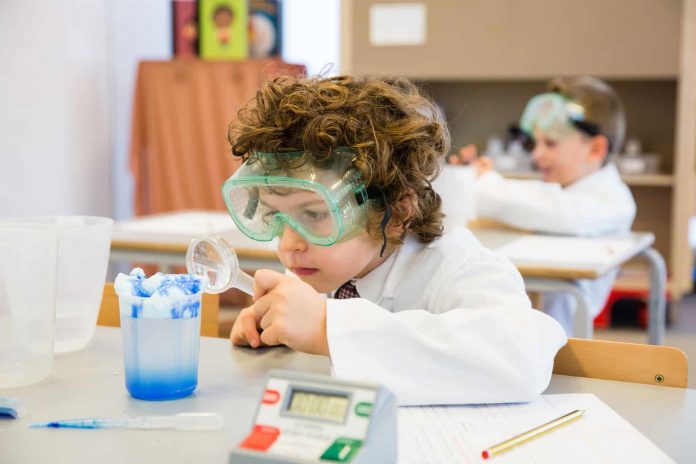Victoria Playford, Headteacher at The Mulberry House School, discusses why it is important to engage and encourage children’s curiosity in STEM education from a young age
‘The most important thing is not to stop questioning – curiosity has its own reason for existing.’ So said Albert Einstein, and for centuries, there’s been a cultural divide between the sciences and the arts, yet curiosity and experimentation are such integral parts of both disciplines. While neither of the two traits can be taught, they certainly can be encouraged through play and observation.
Children’s curiosity
Curiosity allows us to better understand the world around us, so it’s no surprise that young children are the most inquisitive of all. In 2007, a study revealed that children between the ages of 14 months and five years asked an average of 107 questions an hour. In a traditional classroom setting, this natural inquisitiveness can often be overlooked in favour of good behaviour and focus. Instead, shouldn’t we be focusing on igniting children’s interest in unfamiliar concepts? Rather than formal, sit-down lessons indoors, we ensure our pupils regularly get out and about exploring our outdoor classroom and local museums, applying their newly acquired knowledge to real-life scenarios. This helps to blur the lines between life inside and outside of the school grounds, which in turn helps our parents to continue supporting their child’s learning at home too.
Educational storybooks
Storybooks are an incredibly useful tool for parents looking to aid their child’s learning – and they needn’t be ones intended to be purely educational. The Building Boy by Ross Montgomery and David Litchfield is a great starting point for introducing your child to the way in which architecture and engineering builds social spaces to bring communities together. Similarly, Somebody Swallowed Stanley by Sarah Roberts has helped to expand our children’s awareness of how harmful plastic pollution can be, following on from topics covered in science lessons and raised by our school’s Eco Council. With a little creative thinking, the number of children’s stories that could be transformed into immersive learning experiences is endless.
Far too often teachers will concentrate on encouraging children to resist tempting distractions and deepen their focus on the task at hand – but in doing so they’re missing invaluable opportunities to allow children to learn more about what they’re naturally drawn to. From an evolutionary perspective, the desire to obtain and process information has always been a fundamental part of survival. This innate sense of inquisitiveness is what makes us human, and upon the discovery of new information we have the unique ability to then make associations between totally unrelated concepts and ideas.
STEM skills shortage
While concern over the STEM skills shortage continues, it shouldn’t fall to schools to take a purely academic approach to shaping our future scientists, mathematicians and engineers. Could Einstein have discovered the theory of relativity without his persistent questioning of the world around him? Can children follow in the footsteps of those whose discoveries have shaped the world we know today when their academic performance, rather than their inquisitiveness, is their greatest asset? At a time when automation is becoming commonplace in the workplace, it’s our distinctly human traits that set us apart from the machines and will future-proof our careers for years to come.
To an extent, academic performance will always be measured in schools, but it’s a child’s approach to new and unfamiliar situations that will shape the next stage of their lives. Embracing alternative ways of teaching our children is an essential part of developing a child’s love of learning. When paired with their own curiosity, drive and perseverance, this is ultimately what will carry them through to the next stage of their education – and it will stay with them for the rest of their lives.











